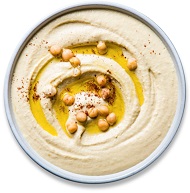
Hummus is a Middle Eastern dip, spread, or savory dish made from cooked, mashed chickpeas blended with tahini, lemon juice, and garlic.
The chickpea is an annual legume. Its different types are variously known as gram or Bengal gram, garbanzo or garbanzo bean, or Egyptian pea. Chickpea seeds are high in protein. It is one of the earliest cultivated legumes, and 9500-year-old remains have been found in the Middle East. The word hummus means chickpea in Arabic.
Tahini is a Middle Eastern condiment made from toasted ground hulled sesame.
The best hummus is lusciously creamy, yet somehow light and fluffy.
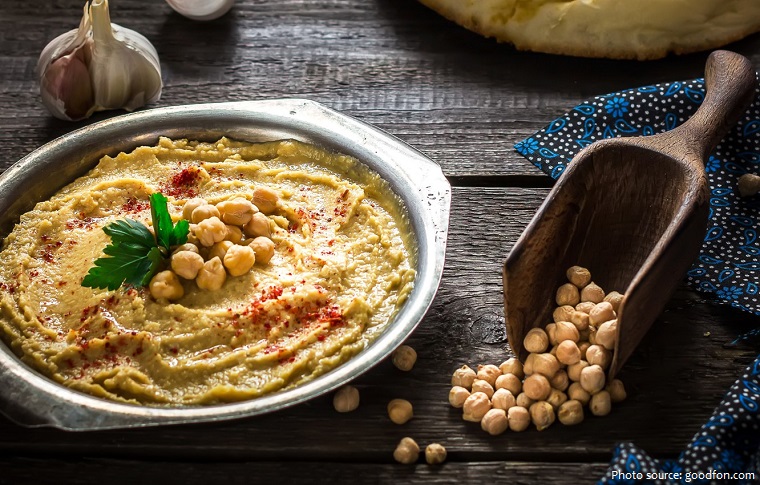
The standard garnish in the Middle East includes olive oil, a few whole chickpeas, parsley, and paprika.
In Middle Eastern cuisine, it is usually eaten as a dip, with pita bread.
In the West, it is now produced industrially, and is often served as a snack or appetizer with crackers.
Although multiple different theories and claims of origins exist in various parts of the Middle East, evidence is insufficient to determine the precise location or time of the invention of hummus. Its basic ingredients — chickpeas, sesame, lemon, and garlic — have been combined and eaten in Egypt and the Levant over centuries.
The debate over the origin of hummus is old–probably as old as hummus itself. The Greeks like to claim it as their own, but the Arabs are equally adamant in their claims.
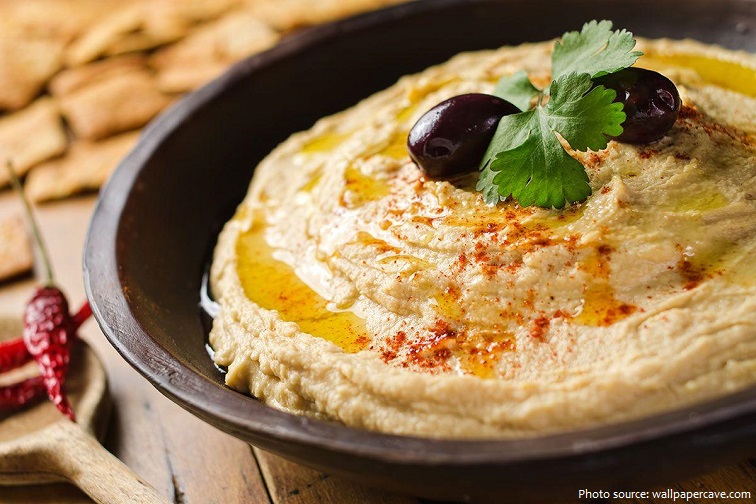
The honest truth is that no one really knows for sure. That being said, though, based on historical information, hummus likely originated from ancient Egypt.
The earliest known written recipes for a dish resembling hummus bi tahina are recorded in cookbooks written in Cairo in the 13th century.
This gluten-free, nut-free and dairy-free spread tastes excellent by itself, it tastes even better topped with chopped tomatoes, parsley, cucumbers, hard-boiled eggs, caramelized onions, sautéed mushrooms, paprika, olives, or pine nuts.
Hummus also pairs perfectly with snacks such as Wheat Thins, apples, pretzels, carrots, celery, bell peppers, pita bread, and pita chips. Hummus also pairs well with falafel, grilled chicken, and eggplant.
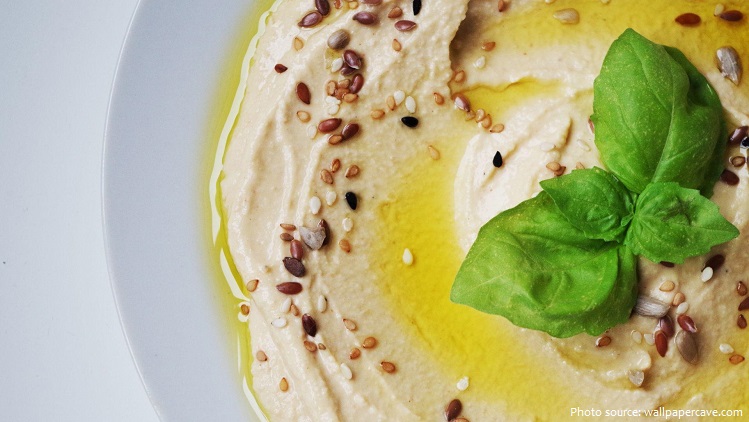
Hummus is a popular dip in Egypt where it is eaten with pita, and frequently flavored with cumin or other spices.
For Palestinians and Jordanians, hummus has long been a staple food, often served as a warm dish, with bread for breakfast, lunch or dinner. In Palestine, hummus is usually garnished, with olive oil, “nana” mint leaves, paprika, and parsley.
Hummus is a common part of everyday meals in Israel. It is made from ingredients that, following Kashrut (Jewish dietary laws), can be combined with both meat and dairy meals.
Although sometimes criticized as Jewish appropriation of Palestinian and Arab culture, hummus has been adopted as an unofficial “national dish” of Israel, reflecting its huge popularity and significance among the entire Israeli population.
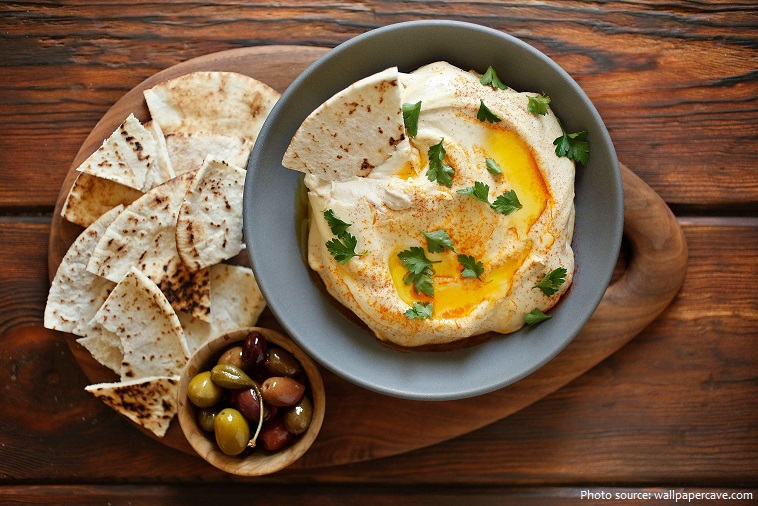
In Cyprus, hummus is part of the local cuisine in both Turkish Cypriot and Greek Cypriot communities where it is called “humoi”.
In the United Kingdom, hummus was popularized by Greek Cypriot caterers, sometimes leading to a perception of it being a Greek food, though it is not well known in Greece.
In Turkey, hummus is considered a meze and usually oven-dried with pastırma, which differs from the traditional serving.
In the United States and Europe, hummus is commercially available in numerous traditional and non-traditional varieties, such as beet or chocolate.
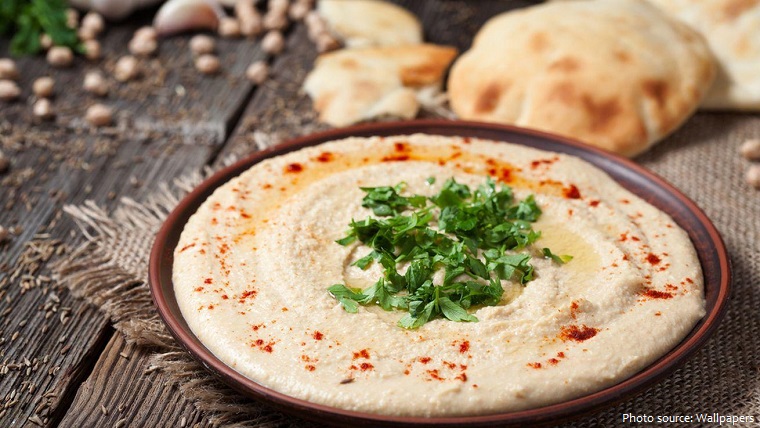
Hummus is naturally high in good fat because of its sesame seed and olive oil content, with around 1 tbsp (30g) containing 8g of unsaturated fats. Hummus is low in carbohydrates and is also a fairly good source of plant-based protein and fibre.
Hummus contains some omega-3 fats, calcium, magnesium, iron and zinc, as well as most of the B vitamins. It also counts as one of your 5-a-day because it contains chickpeas, but only up to a maximum of 80 g, which is approximately 3 tbsp.
A healthy portion size of hummus is around 2-4 tbsp a day, but this must be considered alongside the rest of your diet. For example, if you were having a hummus as a snack then 2 tbsp should be ample, but if it was being used with lunch then you can stretch to 4 tbsp.
Homemade hummus is really easy to make if you have a suitable blender, and allows you to control the ingredients and quantities that you use.
The largest serving of hummus was 10,452 kg (23,042 lbs 12 oz) and was achieved by Chef Ramzi Choueiri and the students of Al-Kafaat University (all Lebanon) in Beirut, Lebanon, on 8 May 2010. The hummus was made by around 300 student chefs under direction of Chef Ramzi, and served on the new largest ceramic plate, which measured 7.17 m in diameter and was created by local architect, Joe Kabalan.
